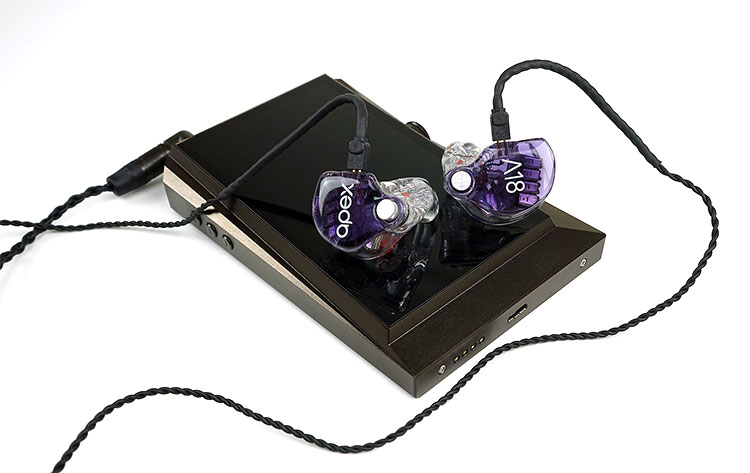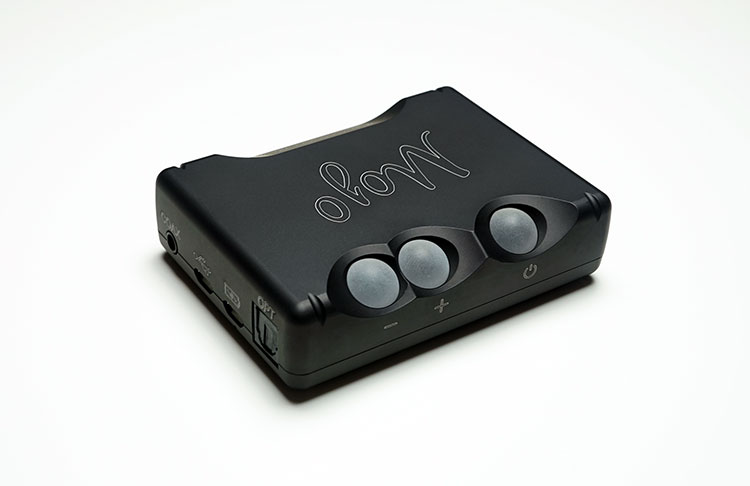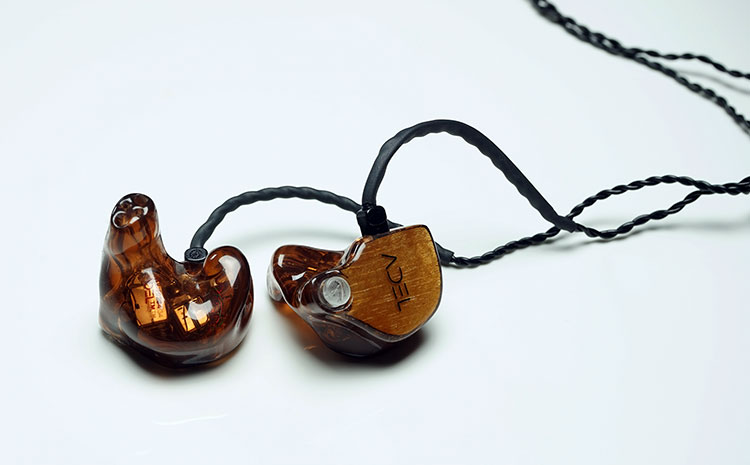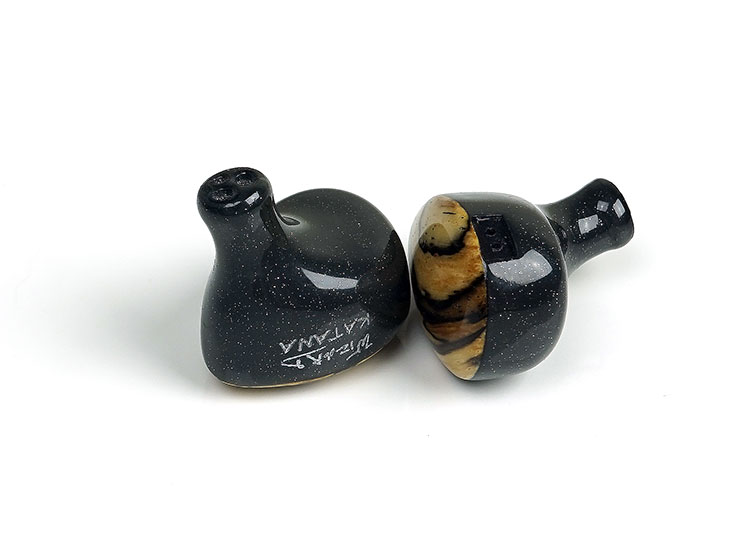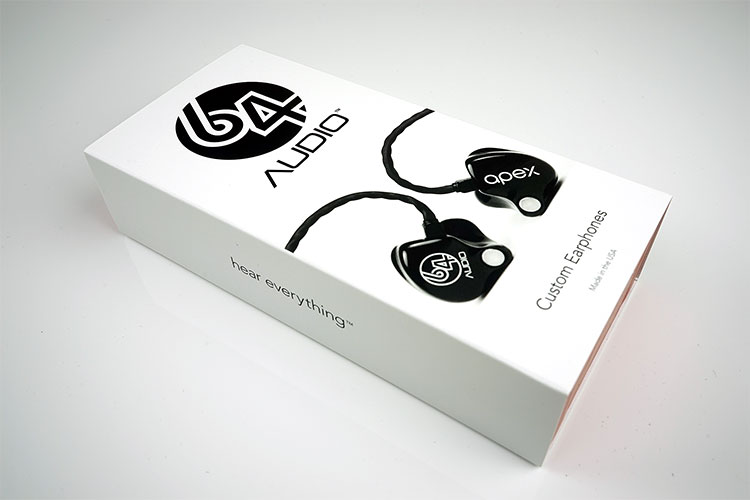Synergy
Efficiency
The A18 Tzar is rated at a supremely low 9 ohms and a fairly sensitive rating of 116dB. On paper, a candle-powered Startac museum piece should drive this with ease never mind DAPs and amps. Yet in testing the A18 did use a touch more voltage than some other equally sensitive IEMs.
A good example was the pairing with the AK240 compared to my most sensitive IEM, the 12.8Ω 117dB Campfire Audio Andromeda.
Comparing side by side the A18 required at least 10 more digital steps on the AK240 volume control to reach comparable levels. The 20Ω 122dB VE6 XControl was also easier to drive than the A18 by around 4-5 digital steps on the AK240.
The A12 was just marginally easier to drive though the gap was far less noticeable and a large factor in the volume level of the A12 is the impact of the low end which sometimes leads me to turn it down a notch more than the A18.
Of comparable level was the Noble Katana which seemed to match the A18 step for step in terms of voltage control. The only time when it dipped 1-2 steps lower than the A18 was on hard-hitting genres such as EDM where the bass was pushed a lot harder.
Noise
The A18 actually does an excellent job with noise control, even with noisy sources that the Andromeda, Jupiter, and SE846 tend to fall down on.
DAPs
The FiiO X5iii/Andromeda pairing will show off a higher noise floor and detectable hiss whereas the A18 is largely silent. The same for the Shozy Alien DAP. Whilst the noise floor is detectable on this pairing it is again much lower than the ultra-efficient IEMs mentioned.
Even the lowest level DAP tested, the Hidizs AP60 proved entirely unsuitable for the Andromeda for noise floors but the A18 pairing again had a much blacker background and lower noise levels.
Amps
The A18 also performs pretty well in portable IEM amps with regards to noise control though voltage levels will be a touch more aggressive and more difficult to control.
Amps such as the ALO Audio V5 will show detectable noise and hiss levels which are not surprises but it will not be as high as you think and quite acceptable given the ratings the A18 has on paper. Class A portable amps such as the Lear FSM-02 V2 are also largely noise-free as is the ALO Audio RX.
Pairings
DAPs
The A18 actually is pretty flexible when it comes to pairing with DAPs. The impressive noise control combined with a largely transparent and neutral to natural tonality makes it ideal for anything that has a better than average DAC and resolving amp. The only caveat for me is just how good your DAP will be to maximize the ability of the A18.
Budget
I found lower-level warm sources to be disappointing with the A18. DAPs such as my usually favored budget DAP, the Shozy Alien (nonscreen version) Gold Edition, actually just sounded too warm and mid-centric, and quite a lot of what is special about the A18 such as the treble performance and soundstage was lost.
Going down further, the budget Hidizs AP60 was messy and unbalanced sounding also with the A18. In a way, you will find out how good your DAP really is with the A18.
High End
Far better warm and smooth-sounding matches included the Opus#3 and the AK380. Both have excellent levels of detail, with the AK380 edging it in resolution and clarity and the Opus#3 opting for an incredibly smooth and euphoric timbre combined with excellent staging width that the A18 ate up and then some.
I actually found myself really enjoying hi-fidelity recordings with both of these sources, with smooth jazz and soul from the Opus#3 providing a very relaxing presentation with the A18 and the AK380 providing a more impactful tonality more suited to a wide range of modern and classic genres.
Mid-Fi
If you want a bit more bass emphasis in the A18’s presentation and are using the M20 module then mid-fi DAPs such as the X5ii and Cayin’s I5 will provide two unique but very musical sounds with the A18.
Both need only low gain and not a huge amount of voltage to drive the A18 optimally and whilst they won’t offer the same level of detail as the AK380 they do produce a fuller low end and in the case of the i5 a bit more in terms of aggression and dynamics.
The X5iii is more in the Opus#3 camp with a more laid-back approach but not quite as detailed with its mid-range, something I think the A18 is very good at showing up in a source. The low-end is sold and musical but it could do with a bit more mid-range bite and air when paired with the A18.
Portable Amps
Tubes
Not that the A18 needs a stacked portable amp but it does tweak the tonal presentation somewhat with both the additional power and the amp’s own inherent coloration.
If you can ignore the noise and hiss levels of the V5 you will find a very nice almost liquid-like mid-range performance and a very sweet almost euphoric sound which is exactly how the V5 should sound like.
With the A18 you are getting a very faithful reproduction of the V5 timbre and dynamics as well as decent voltage control.
Solid State
If you prefer a more solid-state sound and a bit more in terms of dynamics ALO’s RX portable IEM amp should be considered. What I love about this pairing is how the RX takes advantage of the A18’s staging potential and brings the dynamics up a notch, particularly in low-end impact.
Chord Mojo
Leaving the best to the last, the Chord Mojo. What a wonderful pairing with the A18 in terms of clarity and accuracy.
If you are looking for that additional mid-range bite and a very holographic staging presentation the Mojo will deliver that with an abundance of detail and a very pleasing timbre that never gets too euphoric.
It offers a dead silent and black background, tons of voltage control, and spot-on dynamics to get the best out of that tia high driver without ever sounding forced.
Also, check out the low-end definition and extension on Beyonce’s “Love Drought” and “Freedom” from her Lemonade album for a brilliant example of just how well the Mojo pushes the A18 low-end sub-bass and the top-notch detail and extension it can still bring out even with that level of low-end power.
Select Comparisons
64 Audio A12
$1999
Technicalities
The A12 was 64 Audio’s old flagship before the launch of the A18/tia Fourte and the new tia technology. As such it is built to a more traditional BA design spec with 12 drivers in total, 4 for the highs, 4 for the mids, and 4 for the low-end.
It is pretty efficient at 16Ω @ and a sensitivity of 116dB/mW however compared to the A18’s 9 Ω and 116dB/mW rating it is marginally harder to drive at least on paper.
Take that last statement with a pinch of salt though because that is like saying a Porsche is slightly slower than a Ferrari, it is all a matter of context.
Suffice it to say both CIEMs are sensitive and very easy to drive out of most sources though and in some cases due to the tonal balance I found myself pumping up the volume a bit higher on the A18 than the A12.
Tonality
Tonally the A12 has a neutral to warm signature that is smooth and wonderfully musical sounding. However, it has a very clear low-end emphasis with plenty of sub to mid-bass presence as well as an intimate mid-range and a laid-back but smooth-sounding top end.
Its timbre is more to the rich and euphoric than accurate and neutral. Vocals are full-sounding and forward on the A12 with plenty of texture.
Weight & Body
The A18, on the other hand, has a tighter, faster, and better-defined low end. It has excellent sub-bass power but it is not as full sounding as the A12’s weightier bass response.
As such the A12 bass will hit harder and may suit some modern genres better but it will also sound a little slower by comparison. Note body on the A18 is a little lighter with less body but still sounds very natural and trades weight for articulation and detail.
Staging & Detail
The resolution on the A18 is spectacular and a step up over the A12. The staging and instrumental positioning on the A18 are just so much more 3-dimensional sounding than the A12 with bags more headroom and top-end extension.
For those who found the A12 just a touch veiled in the mids and vocals then the A18 is perhaps the complete opposite with pinpoint clarity and control.
Treble
The A18 treble extends way beyond the A12’s capability which, in comparison, sounds relaxed and a little rolled off. There is more energy, detail, and articulation in one tia open driver than those 4 A12 treble drivers. Quite special really how open-sounding everything is on the A18.
Vision Ears VE6XControl
VE6 Xcontrol: 1930 EUR (-19% VAT if outside EU)
Technicalities
The VE6 XControl is a 122dB, 20 ohms, 6 BA driver CIEM design. Drivers are configured with 2 for the lows, 2 for the mids, one for the upper mids, and one for the treble.
We reviewed the VE6 XControl back in late 2014 and it held the top spot in my own CIEM collection for many a year. It was most notable for being efficient, spacious sounding, and throwing out an almost HD800-like type of width to its soundstage.
The switching system injected a little bit of low end when needed or pulled it back to something more neutral and reference-like in tonal balance, a bit like the M20 and M15 modules on the A18. The VE6 XControl also uses a single wide bore to mix the channels before hitting your ear canal.
The VE6 XControl is also easier to drive than the A18 with around a 5-6 digital volume step difference for instance on the FiiO X5iii so those thinking 9 ohms is a one-way ticket to smartphone heaven think again. The A18 is not as easy as you would think in terms of voltage requirements.
Tonality
Tonally the A18 is perhaps the more neutral of the two but it also extends deeper and taller than the VE6 which has a distinct bias to width which even the A18 shies away from. The A18’s staging is slightly more circular in shape and possibly a bit more accurate sounding in its imaging and instrumental placement.
Mids
Vocals on the VE6 are more centered and forward sounding than the A18 which, whilst having a slightly boosted vocal presence tends to sit a little further back.
Instrumental placement on the VE6 tends to be on each end of the stage maximizing that sense of width whereas the A18 has them pretty much placed behind and to the sides depending on the mix making it more 3-dimensional and engaging.
Timbre
Timbre on the VE6 is quite natural sounding and has a touch more body, particularly on the lower mids compared to the A18 which is a little bit thinner in comparison. Where the A18 pulls away from the VE6 though is in the upper-mid to treble energy, the level of clarity, and the superior extension.
Treble
Again, that tia open driver really makes a big difference and makes everything sound much more open. The VE6 extended pretty well when I reviewed it but it doesn’t come close to the airy headroom the A18 can throw out with such ease.
Also, despite its greater treble energy and sparkle, the A18 is more controlled sounding than the VE6 top end.
Noble Audio Katana
$1850
Technicalities
The Katana is the latest co-flagship launch from Noble Audio and is a customized 9 BA driver IEM with a rating that we believe is somewhere around 20-30 ohms and around 115dB but only the Wizard truly knows and it is normally a guarded secret.
In any event, both the A18 and Katana seem comfortable with similar voltage or digital volume levels on decent sources with the Katana coming in maybe just 1-2 steps lower than the A18 but nothing significant.
You can also get the Katana in a CIEM or universal format and we recently reviewed the universal format which, as it stands, it is probably one of the best universal IEMs I have heard to date this year. I have no clue if the custom version goes one notch higher.
Tonality
Tonally both the A18 and Katana have similar goals – to produce a reference sound and an accurate sound with a focus on precision and control.
Both have done a really excellent job here and there is little really to divide them when it comes to performance levels. Comparing these two is more about subtle changes in tonal preference and the overall level of detail, particularly in the treble and mids.
Bass
If anything, the Katana has the slightly heavier hitting and warmer low-end with a bit more sub-bass rumble and mid-bass boosting but not by a huge amount using the foams tips.
The A18 is slightly north of neutral with excellent extension and detail but it is not quite as boosted, even with the M20, but it does sound faster and is very well defined.
If you want a slightly more musical bias then the Katana will give you that, if you want something with a bit more low-end speed and detail then the A18 is the choice.
Mids
Mids are very spacious sounding on the Katana much like the A18 though timbre-wise I found the Katana to just have a slight edge in smoothness with a more organic-sounding instrumental timbre and a more forward and fuller vocal presence.
The A18, by contrast, was cleaner sounding, certainly a bit more resolving and detailed as well as being a bit better at handling vocal and percussion sibilance, particularly with the mid-high and tia driver.
Treble
Both have a treble response that is airy, articulate, and very well extended indeed but the A18 edges it by sounding more open and at the same time a bit more energetic and articulate without losing control. Certainly, both these two flagship IEMs really spank the ass of the VE6 XControl and A12 for treble clarity.
One thing to note with the universal Katana. The silicone tips drained the life out of the Katana making it sound thin and tizzy. It is only the foams that got the musicality and body back into the Katana and made it remarkably competitive compared to the A18.
Our Verdict
To date, the A18 is the most expansive and detailed CIEM I have heard to date, which makes me beg to wonder what the heck is going on with the tia Fourte given its slightly higher price point.
Gives me the shivers, to be honest, and that’s not often. I do remember when I heard the tia Fourte at CanJam Singapore and being blown away and being a bit worried that the A18 would pale in comparison but thankfully that is not the case.
Tonally it hits its goals and then some. It is transparent and detailed, but never boring, and sounds positively alive and never anything less than fully engaging.
That tia high driver sitting there on its own is doing the work of at least 4-5 traditional BA designs no doubt and even then the tonal quality simply cannot be replicated on old BA designs. It is so open sounding and sibilant-free like a quality open headphone in full flow.
Match it with anything, it does the job, just don’t throw garbage into a budget DAP and expect the next coming of Jesus in audio terms. The A18 will sound incredible with incredible sources.
It is expensive, I will give you that, and going to $2999 is flagship headphone territory but look around, there are quite a few IEMs now going over $2k and doing some very interesting things with the technology.
I am still not a believer in the driver race though, 18 drivers are the most yet in an IEM but it is the tia High that makes this a very special 18.
64 Audio A18 Technical Specifications
- Crossover: Integrated 4-way passive crossover
- Impedance: 9 ohms @ 1kHz
- Sensitivity: 116 dB/mW
- Frequency response range: 10Hz – 20kHz
- Noise Isolation: -20dB w/ apex m20 module, -15dB w/ m15 module


